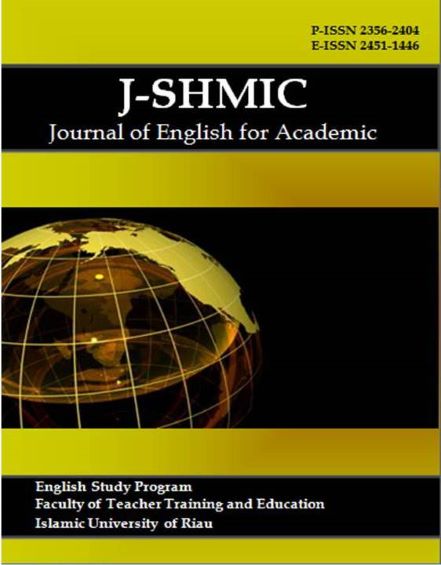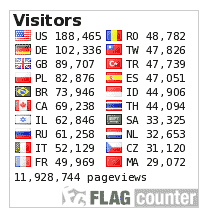Designing an English Coursebook for Senior Executive Administrative Assistants for English Department Students Based on Indonesian National Work Competency Standards (SKKNI)
Keywords:
English for Business, Executive Administrative Assistant, SKKNIAbstract
Designing a comprehensive course book for English for Business is a challenging endeavor that requires a deep understanding of the unique linguistic and professional needs of learners. In the rapidly evolving landscape of international business communication, educators and instructional designers face a lot of obstacles that must be addressed in order to create a truly effective and relevant course book. This study aims to create a coursebook for an English for Business class based on SKKNI in the scheme of executive administrative assistants. The instructor must construct their own coursebook because SKKNI does not give references. Most studies, however, claimed that generating ESP content is challenging due to a lack of sources, assistance, and a national curriculum. Theoretically, this research is based on Borg and Gall's RnD steps, and just 5 steps have been chosen to conduct this research. The researchers conducted expert validation to evaluate the coursebook and administered a questionnaire to students. The coursebook was judged good (73%) by expert validators with some revisions and 79% by students with several features needing improvement in various categories such as typeface, illustration, and mistyped words.
Downloads
References
Andrade, M. S. (2016). Curricular Elements for Learner Success—21st Century Skills. Journal of Education and Training Studies, 4(8). https://doi.org/10.11114/jets.v4i8.1743
Basturkmen, H. (2010). Developing Courses in English for Specific Purposes. Palgrave Macmillan.
Bielousova, R. (2017). Developing materials for English for Specific Purposes online course within the blended learning concept. TEM Journal, 6(3), 637–642.
Borg, W. R., & Gall, M. D. (1983). Educational research: An introduction. Longman.
Borg, W. R., & Gall, M. D. (2003). Educational Research: An Introduction 4th Edition (4th ed.). Longman Inc.
Boroujeni, S. A. , & F. F. M. (2013). A Needs Analysis of English for Specific Purposes (ESP) Course for Adoption of Communicative Language Teaching: (A Case of Iranian First-Year Students of Educational Administration). International Journal of Humanities and Social Science Invention, 2(6), 35–44.
Bracaj, M. (2014). Teaching English for Specific Purposes and Teacher Training. European Scientific Journal, 10(2), 40–49.
Brunton, M. (2009). Evaluation of Highly Recommended: A textbook for the hotel and catering industry. ESP World, 8(1), 1–8.
Day, J., & Krzanowski, M. (2011). Teaching English for Specific Purposes: An introduction. Cambridge University Press.
Harsono, Y. M. (2007). Developing Learning Materials for Specific Purposes. TEFLIN, 18(2), 169–179.
Hyland, K. (2006). English for Academic Purposes An Advanced Resource Book. Routledge.
Ibrahim, A. I. (2010). ESP at the Tertiary Level: Current Situation, Application and Expectation. English Language Teaching, 3(1). https://doi.org/10.5539/elt.v3n1p200
Jenkins, J. (2015). Repositioning English and multilingualism in English as a Lingua Franca. Englishes in Practice, 2(3), 49–85. https://doi.org/10.1515/eip-2015-0003
Kusni. (2013). Reformulating English for Specific Purposes (ESP) in Indonesia: Current Issues and Future Prospects.
Lesiak-Bielawska, E. D. (2015). Key aspects of ESP materials selection and design. English for Specific Purposes World, 46, 1–26.
Marwan, A. (2017). ESP teaching challenges in an Indonesian vocational higher institution. The English Teacher, 38, 1–12.
Medrea, N., & Rus, D. (2012). Challenges in Teaching ESP: Teaching Resources and Students’ Needs. Procedia Economics and Finance, 3, 1165–1169. https://doi.org/10.1016/S2212-5671(12)00291-2
Paltridge, B., & Starfield, S. (2013). The Handbook of English for Specific Purposes (Vol. 592). Wiley-Blackwell.
Salehi, H., Davari, A., & Yunus, M. M. (2014). Evaluation of an ESP Course of Qur’anic Sciences and Tradition. International Education Studies, 8(1). https://doi.org/10.5539/ies.v8n1p29
Tomlinson, B. (2011). Materials development in language teaching. Cambridge University Press.
Unal, A. (2014). The Problems Encountered in English for Specific Purpose: Business Department Case. The Clute Institute International Academic Conferences.
Widodo, H. P. (2015). The development of vocational English materials from a social semiotic perspective: Participatory action research. University of Adelaide.
Wozniak, S. (2010). Language needs analysis from a perspective of international professional mobility: The case of French mountain guides. English for Specific Purposes, 29(4), 243–252. https://doi.org/10.1016/j.esp.2010.06.001
Zohoorian, Z. (2015). A Needs Analysis Approach: An Investigation of Needs in an EAP Context. Theory and Practice in Language Studies, 5(1), 58–65. https://doi.org/10.17507/tpls.0501.07
Published
How to Cite
Issue
Section
This is an open-access article distributed under the terms of the Creative Commons Attribution-ShareAlike 4.0 International License which permits unrestricted use, distribution, and reproduction in any medium. Users are allowed to read, download, copy, distribute, search, or link to full-text articles in this journal without asking by giving appropriate credit, providing a link to the license, and indicating if changes were made. All of the remixes, transform, or build upon the material must distribute the contributions under the same license as the original.











